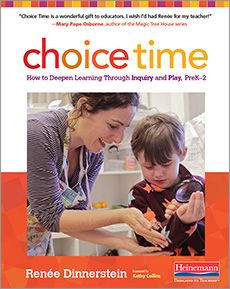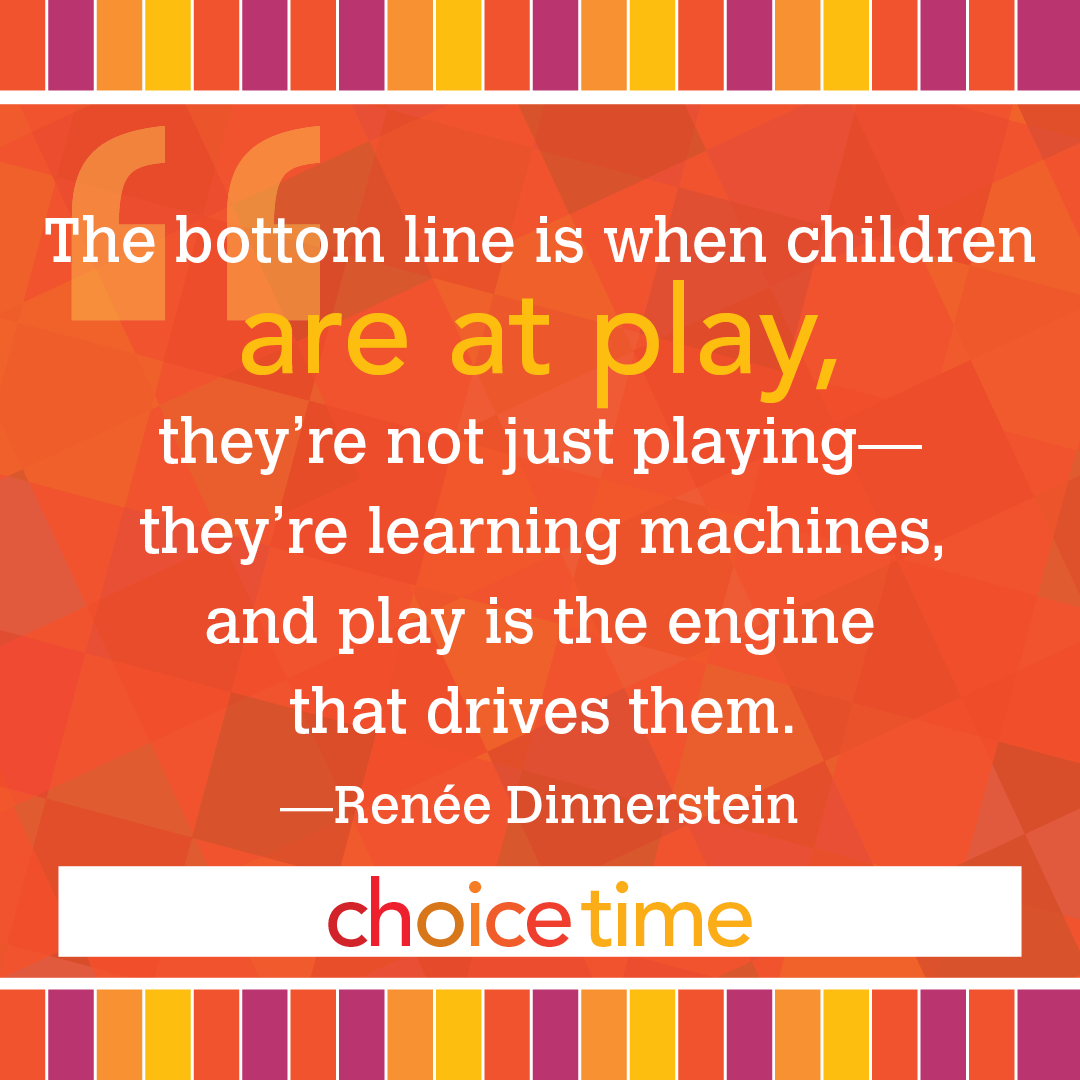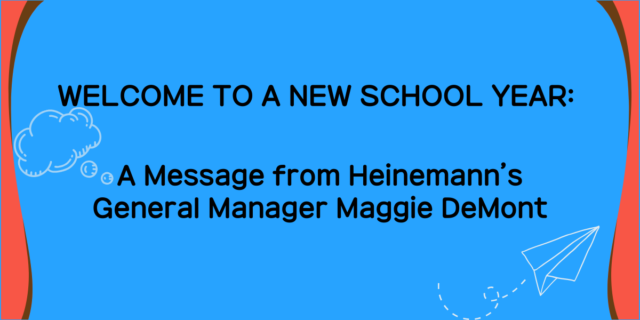
by Renée Dinnerstein
Everyone understands that this is a stressful time for adults and for children. Parents and caregivers are often responsible for taking care of the shopping, cooking, and cleaning while caring for children. Suddenly they are expected to be a teacher as well, in many instances while also working from home. It’s exhausting just to think about it.
A child’s engagement is the most powerful asset we have for teaching and learning. Early childhood educators have always understood the importance of play—in all its many forms—in the lives of their students. When PreK–K children are in school they often participate in guided play in an environment that has been carefully planned by their teacher to stimulate and support their curiosity and creativity. There are ways families can support the learning that happens in the classroom when young children are at home during distance learning.
Recognizing and Honoring the Many Forms of Play
Before they ever come to school, children naturally learn and grow as they play with each other and with adults. This learning is essentially effortless—a natural consequence of play. Seeing this, it just makes sense that developmentally appropriate practices in classrooms should tap into the natural energy of play that children bring with them to school. In a 2012 position paper, the National Association for the Education of Young Children (NAEYC) notes the many benefits of children’s play to developmentally appropriate practice. As the NAEYC paper notes, children’s play has a number of advantages:
- It helps develop self-regulation. Children take turns playing different roles at different times. One child wants to be the doctor now, but she has to wait her turn.
- It promotes the development of language. Drawing from their experiences, the children support each other in using the particular language of a doctor’s office: fever, X-ray, medicine.
- It promotes cognition. All the children must think their way through the play in very intentional ways. I am in a doctor’s office. What should I do next?
- It promotes social competence. As children execute a successful play experience together, each of them is empowered by the role she or he plays in its success.
- It gives children opportunities to explore the world. In dramatic play particularly, children bring the world into their play, where they can explore it safely. Today it’s a doctor’s office; next week it might be a camping expedition or a fire station.
- It provides opportunities for children to interact. It’s difficult to play “doctor’s office” by yourself, so children must interact and co-construct all the meaning and decision making.
- It provides opportunities for children to express and control their emotions. All sorts of emotional issues can arise in play: fairness, inclusion and exclusion, a lack of understanding, varied expectations, success and failure.
- It helps children develop their symbolic and problem-solving abilities. Two chairs placed side by side make an examination table. But wait—it’s not long enough for the “patient” to lie down on. Let’s get two more chairs!
- It gives children opportunities to practice emerging skills. The doctor writes a prescription, carefully sounding out the words, “Pills for a cold.”
The bottom line is, when children are at play, they’re not just playing—they’re learning. Play is the engine that drives their learning.
Here is the truly important idea about the education of young children that parents can hold onto: Children learn through play! If children are pretending to have a restaurant they might choose to make menus, using important literacy skills. If they’re building a tower with blocks or a fort with couch pillows, they’re learning about balance and also, most important, they’re learning to problem solve.
Let’s create a situation that uses cardboard boxes. Don’t throw them in the recycle bin! Empty boxes can get the wheels of a child’s mind spinning. If you have a big box, that opens up so many possibilities. All you need to do is “gift” the box to your child and say, almost to the room, “I wonder what this box will become.” Then leave your child alone with it. It’s helpful if you have crayons or markers, paper, glue, maybe even cardboard strips and empty paper towel dowels. Now the fun begins. Just to warn you, it doesn’t begin quickly. Children need, what I call, mess around time. They need time to think and to consider. Maybe it’s necessary to step away from the box, but just leave it in place because he/she will, I’m sure, come back to it. Perhaps at dinner it could be the topic of a family discussion. You, your partner, or an older child might think aloud about what you might be doing with the box. You might say, “I always wanted to go to outer space. Wouldn’t that be a great rocket ship?” Then another adult might disagree. “I would make a big fire truck that I could ride in.” If your child doesn’t say anything, then just drop the subject and go on to something else. Be assured that he/she is starting to think about what will happen.
Perhaps the next day you might casually give your child a big piece of paper and say, “I found this paper, just in case you want to make a plan for your box.” You don’t have to say anything else. You’ve planted seeds.
There’s a nice YouTube video of the author reading her book “It’s Not a Box” and you might want to look at it together as a family. It’s a lovely story.
An activity like this, which is very open-ended and leaves so much to the child’s imagination, is important play. It is so much more powerful in terms of a young child’s learning than practicing with worksheets. When children play they are learning.
Think of these learning categories and how they are important skills for success in life–creating a plan, following through, trial and error, imagination, making mathematical and scientific observations, using analytical reasoning, and thinking creatively.
You can help support children with their play by stepping back and giving them time and space. You also can ask meaningful questions and make important observations to provoke children’s thinking. As strange as it may seem, these are questions that have no right or wrong answer. For example, if you’re looking at your child’s drawing, instead of asking, “What is this color called?” you might say, “You’ve made such an interesting choice of colors here.” and then wait a moment to see if your child wants to talk about the colors. Sometimes though, the child is deep into the creative process and that might be a time for the parent to just step back and give some space.
Here are some examples of questions that you might ask your child during and after play:
- Can you tell me how this works?
- Could you tell me what you were thinking…? (When you decided to do this? When you added this part to the drawing? Etc.)
- What might happen if ___________?
- Why did that happen?
- What is the problem you’re trying to solve?
- That is very interesting. That time you _______ instead of _______.
- I see ________. What’s happening here?
- Hmm, how does that work?
- I wonder____________(Wondering is always good to do!)
- What are other ideas you have about ____________.
• • •
To learn more about Renée Dinnerstein and her book Choice Time: How to Deepen Learning Through Inquiry and Play, visit Heinemann.com.

 Renée Dinnerstein (@RDinnerstein) has almost 50 years experience as an early childhood educator, teaching in both Italy and in the United States. She is a past member of the Teachers’ College Reading and Writing Project Early Childhood Reading ‘think tank’, and has worked as an Early Childhood Staff Developer in the New York City Department of Education, where she helped write the New York City Pre Kindergarten Standards. Visit her online at investigatingchoicetime.com.
Renée Dinnerstein (@RDinnerstein) has almost 50 years experience as an early childhood educator, teaching in both Italy and in the United States. She is a past member of the Teachers’ College Reading and Writing Project Early Childhood Reading ‘think tank’, and has worked as an Early Childhood Staff Developer in the New York City Department of Education, where she helped write the New York City Pre Kindergarten Standards. Visit her online at investigatingchoicetime.com.



